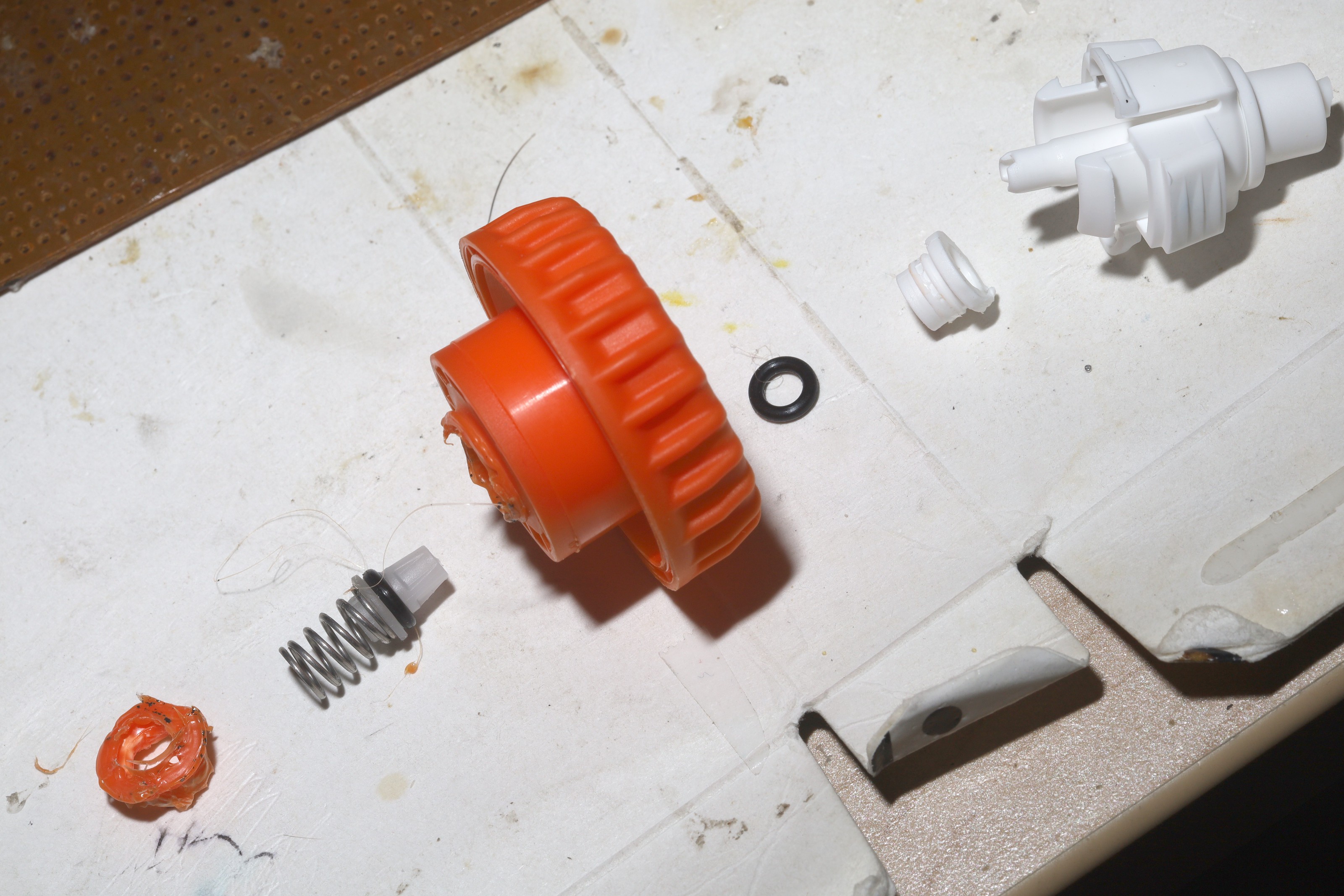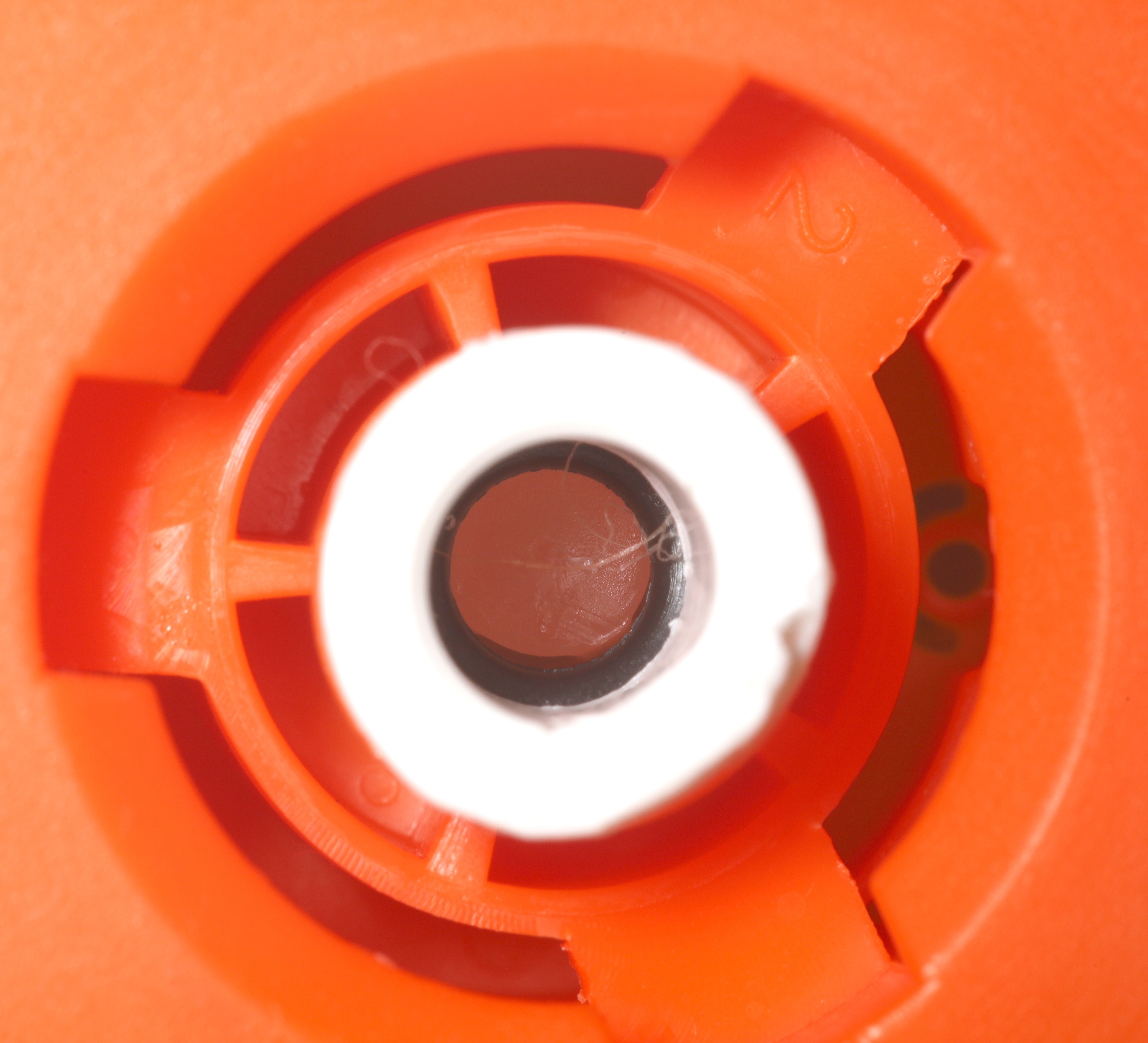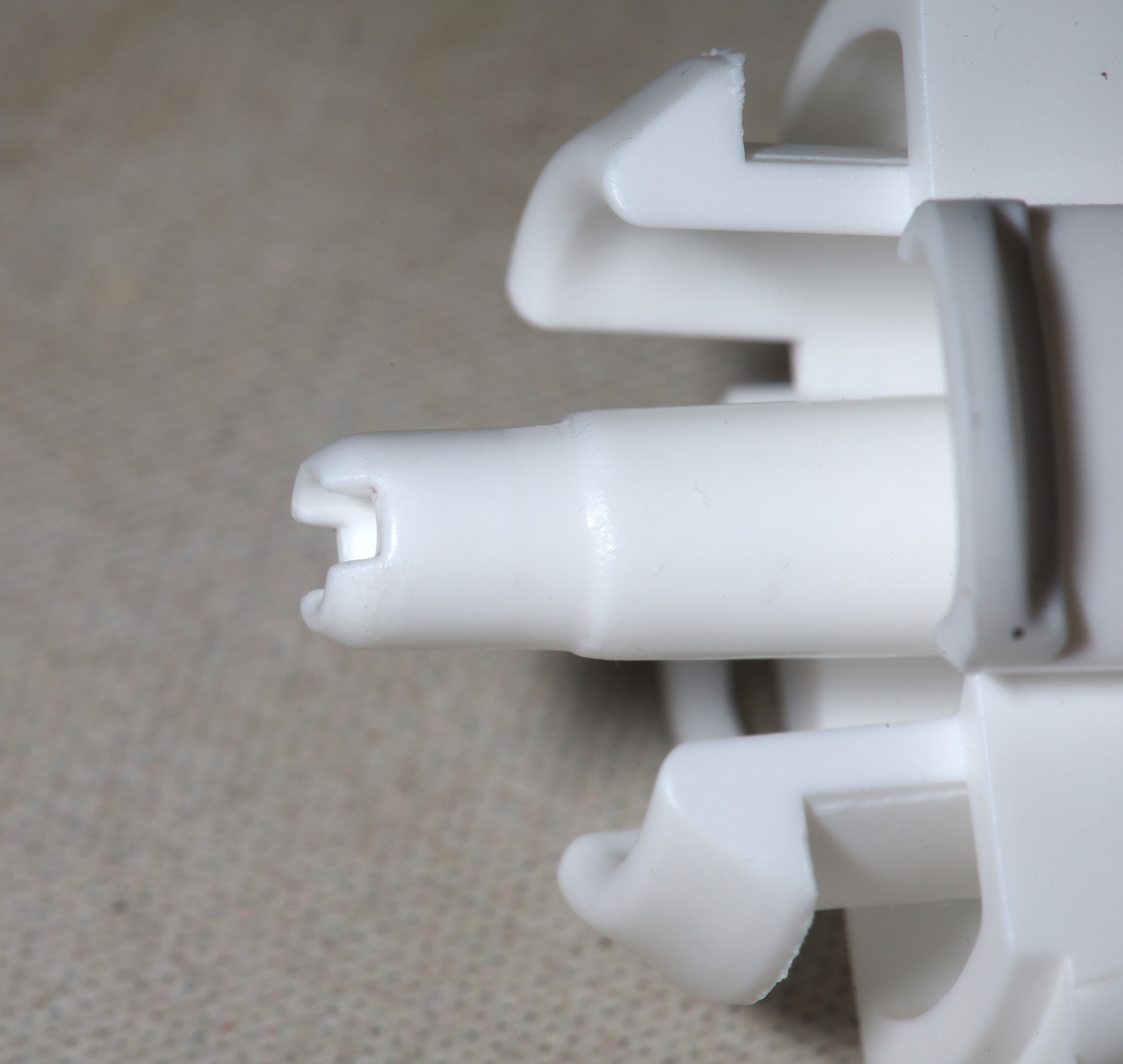Electric sprayer air conditioning
What air conditioning a $200 PG&E bill pays for.
What air conditioning a $200 PG&E bill pays for.
To make the experience fit your profile, pick a username and tell us what interests you.
We found and based on your interests.



Upon further inspection, the original intake cap wasn't a filter but a spring loaded valve. It closed when the tube wasn't connected. When the tube was connected, it pressed in a spring loaded plunger to open the valve. A small groove allowed fluid to flow out of the valve.
A lower o-ring was the one that cut off the fluid flow. An upper o-ring was supposed to form a seal against the tube. It seemed to be another source of easy air leaks that could require lubrication. The lower o-ring was not user serviceable.
Your best bet is to scrap the intake cap but keep the spring. O-rings tend to die in storage, which makes lions wonder how long the pump is going to last.
The previous hacks on the valve & pump continued to work. The external battery pack proved quite a pain, so there was an attempt to make the battery contacts more assertive.
Then the end cap hole got widened so it could slide off a tube.
Then replaced the filter with a much longer 3mm x 5mm tube & 3mm fittings.
The silicone tube is heavy enough to sink without any fudging.
This setup was bulletproof. It could spray all body parts. The rechargeable batteries worked. The mane problem is it's not very portable. The nozzle can't be folded down & it's still a bit long.
Being able to see the water in the tube revealed a peristaltic pump would not have a high enough flow rate. The balky suction pump fills the tube almost instantly, once it's primed. The priming settled on sucking water in the inlet up to the water level, which is about as high as the pump can suck it without priming. Then pinch the tube & hold the inlet upside down above the pump.
Suck in just enough air so when the tube is submerged back in the tank, the sucked in water is below the inlet. Then run the pump below the tank until it's primed. It just needs enough water below the inlet position for the siphoning action to prime the rest of the tube. If it still won't prime, blow in the inlet to clear any surface tension blockage. Lions wouldn't use it for insecticide.
There are some reviews of the craftsman branded version of the same pump. Buried in the comments are rare complaints about the priming. Most animals seem to use them once, get good results, & throw them away.
The goog finally rediscovered the super expensive sprayers of past searches. They would be ideal.
https://www.amazon.com/Chapin-75004-Electric-Rechargeable-Portable/dp/B0CY6QXFG2/
https://www.amazon.com/Electric-Plant-Spray-Bottle-Watering/dp/B0989ZHXFV
https://www.amazon.com/SOLO-260-Battery-Powered-One-Hand-Sprayer/dp/B0CPMDCTG2
Somehow these manage to cost $20-$50 & they still sometimes die.
Surprised even his $50 solo 260 failed to prime. The shorter hose didn't matter.
------------------------------------------------------------------------------------------------------------------------------------------------------
After blowing into the intake, the HDX sprayer eventually consistently primed when fed from a tank above it. It might be prone to surface tension blocking the narrow passages, which is cleared by blowing into it. The valve seemed to hold priming after being lubricated. The problems with these suction sprayers all seem to be surmountable with enough manetenance.
The mane problem is lack of space to store a large tank, large pump, hose, & standalone nozzle. It's more important for it to be user serviceable & compact than manetenance free. The experiment showed a motorized pump is really important to spray enough water on the hottest days or you're going to be making more heat from pumping.
--------------------------------------------------------------------------------------------------------------------------------------
The most popular sprayer seems to be
https://www.amazon.com/HIFAY-ES1-Fertilizer-Rechargeable-Automatic/dp/B0BQBMC3XY
But the HDX sprayer has worked well enough to do the job. The tendency of the $25 ones to need manual priming & break is a big negative.
https://www.homedepot.com/p/HDX-No-Pump-Sprayer-Wand-190751/322448067#overlay
The lion kingdom finally took another step towards better thermal management. The original idea with the nano misters
https://hackaday.io/project/180609-personal-air-conditioning-with-mems
was to use those as a powered spray bottle. They didn't prove powerful enough.
The next step was an electric gardening sprayer. When it works, it's like having a garden hose in the apartment. It cools down a lion in no time. It's definitely the right idea but there are problems. The pump has to be primed or it won't spray anything. The only way to prime it is to keep it below the tank & really pray. It's not easy to get the tube filled. It might be easier if the tube was transparent. Eventually, it could only be primed with running water in the sink. Blowing into the inlet seemed to help. A pump closer to the inlet would be ideal.
Once primed, it has a valve which tries to hold a vacuum unless the trigger is down.
Eventually, the valve would no longer retain a vacuum after a certain amount of time. It's 1 of those valves which really has bee dick margins. The pump would have to be below the inlet so it won't need the valve. If the nozzle ends up below the pump, it'll drain the tank. It would still need a valve for the outlet. The lion kingdom has solenoid valves specifically for air.
If any air enters the intake, it has to be primed again. The intake has to be really firmly submerged in the tank. It takes some effort to make sure it doesn't bounce around & ingest air. There is a special tank with the right threads to mount the intake.
The extremely short hose also makes it hard to keep it submerged. It's not long enough to spray the mane or the back. All the fittings are for the same 3mm ID x 5mm OD tube that the swamp cooler uses.
Finally, the nozzle doesn't lock into a useful angle. It has to be held sideways to stay in a useful angle.
In the teardown process, the lion kingdom tried to press in the tabs to extend their life. The case comes apart pretty easily when pressed in the right places.
It's 1 of those gadgets which doesn't work with NiMH because the terminals are slightly off.
Eventually got a temporary power solution. The optimum nozzle angle evolved to point right back to the handle.
The nominal power usage is 1.5A at 4.8V.
The pump is user serviceable. It has 2 gears meshing the water through.
1 gear is direct driven by the motor. The other gear is on a plastic bearing. Also visible is the outlet of the pesky valve.
Prying off the teflon bit slides out the complete valve. It can be fixed open by removing the spring. The O-rings are where the magic happens. The big one presses against the pump inlet to hold a vacuum. The little one keeps water out of the electronicals. The spring originally had brown grease.
Cleaned off the brown grease, dumped silicone grease on all the O-rings & spring.
This seemed to restore the valve functionality, for the moment. Also put silicone grease around the motor bearing to try to keep water out.
-------------------------------------------------------------------------------------------------------------------------------------------------------------------
Wally has another variation on the theme which includes a matching tank. The lion apartment has a case of water tank overload. A better way might be printing an adapter for 1 of the existing tanks.
------------------------------------------
The key desires are a longer tube, a pump below the intake to stay primed, a smaller & better aimed nozzle, external battery which sits on the tank. It could probably be done with...
Read more »
Create an account to leave a comment. Already have an account? Log In.
Become a member to follow this project and never miss any updates
By using our website and services, you expressly agree to the placement of our performance, functionality, and advertising cookies. Learn More